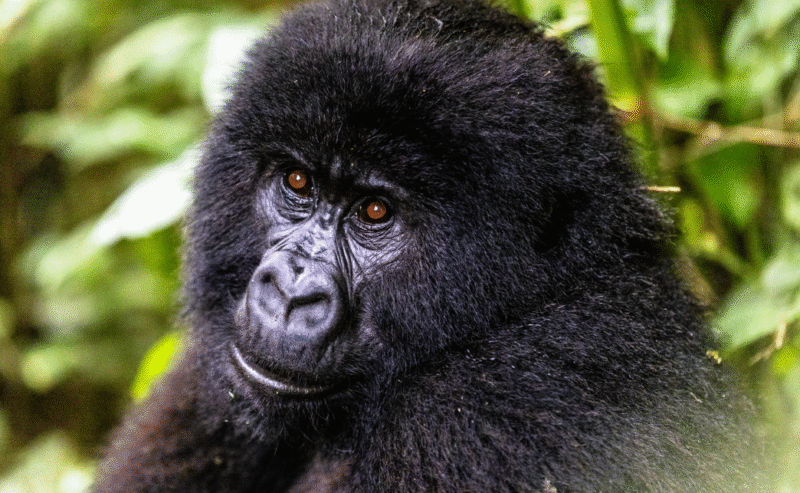
Support Virunga this Giving Season >

Home » About
Virunga National Park is a UNESCO World Heritage Site internationally recognized for its exceptional wildlife and habitats. Explore one of the most biodiverse protected areas in the world.
Virunga National Park is a UNESCO World Heritage Site located in the east of the Democratic Republic of Congo. Virunga is the continent’s most biologically diverse protected area and a national park embarking on an ambitious development programme known as the “Virunga Alliance”.
Situated in a region which has been deeply impacted by the effects of war and armed conflict for over 20 years, Virunga is currently protected by a dedicated team of 760+ Rangers. These local men and women go through intensive training, risking their lives on a daily basis to safeguard the Park’s exceptional wildlife, including the last of the world’s endangered mountain gorillas.
Alongside this essential conservation work, the Park is committed to supporting local communities. Virunga has a vision for responsibly harnessing the Park’s natural resources to create new opportunities for the four million people that live within a day’s walk of its borders.
Focussing on three key areas: hydropower, sustainable agriculture and fisheries, and tourism, Virunga National Park is working to economically transform the region – creating jobs and reducing poverty rates. This innovative, community focussed approach to conservation is working to reduce the pressures currently faced by the Park’s Rangers from armed groups, illegal poaching, and land encroachment.
Click here to learn more about the work of the Virunga Alliance.
Mammal Species
Virunga’s most prominent mammals include forest and savanna elephants, hippos, okapis, lions and mountain gorillas.
Bird Species
The number of bird species in Virunga exceeds the total number in the U.S. and is more than three times the number in the U.K.
Reptile Species
Virunga’s recorded number of reptile species makes it the richest of the protected areas in Africa
Amphibian Species
Virunga has the highest number of amphibian species in the Albertine Rift, an area which encompasses parts of Uganda, the Democratic Republic of the Congo, Rwanda, Burundi and Tanzania.
Primate Species
Virunga is the only site on earth to have three types of great apes – the mountain gorilla, eastern lowland gorilla, and eastern chimpanzee.
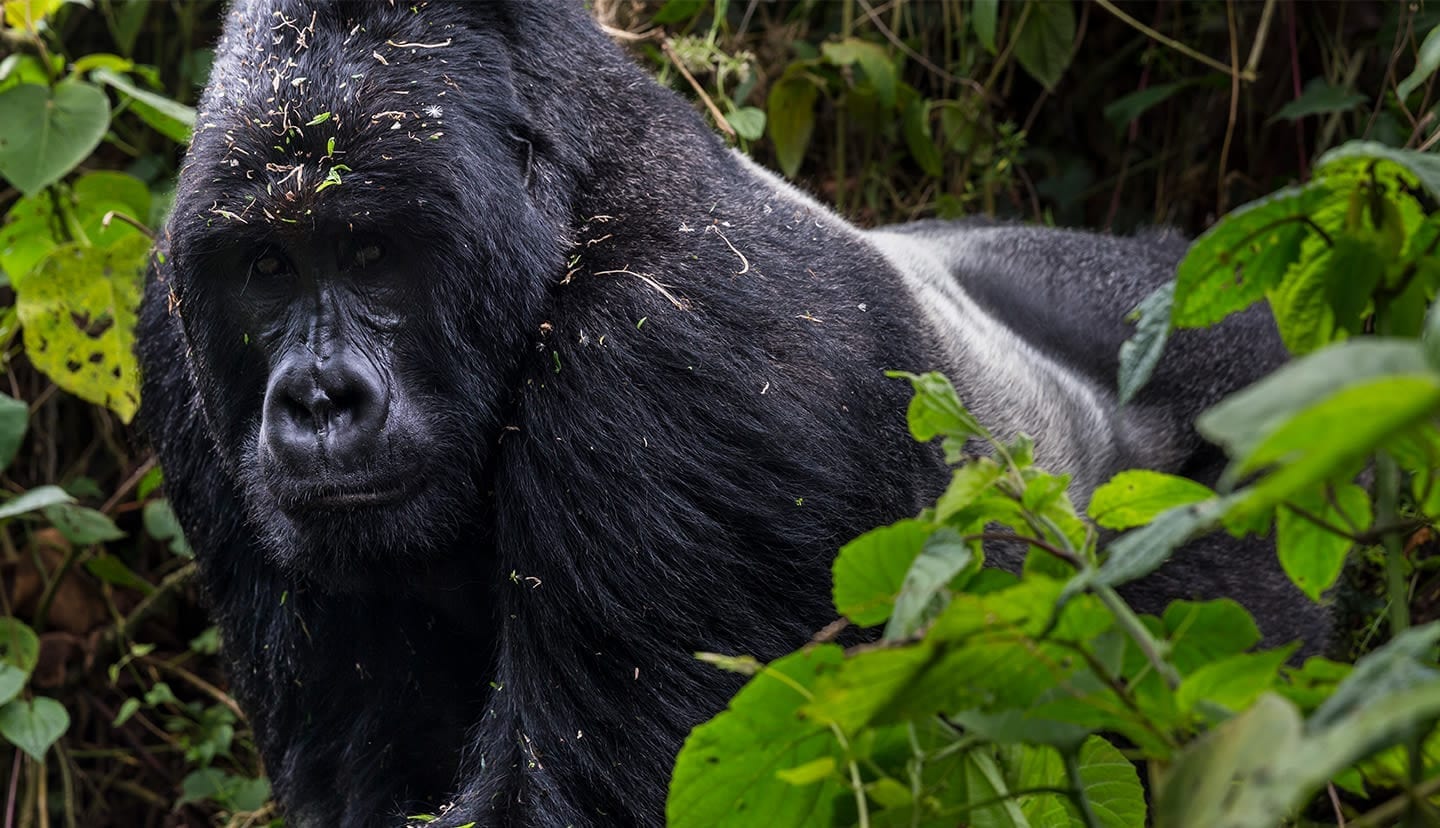
Around one third of the world population of endangered mountain gorillas live in the lush volcanic forests of Virunga National Park.
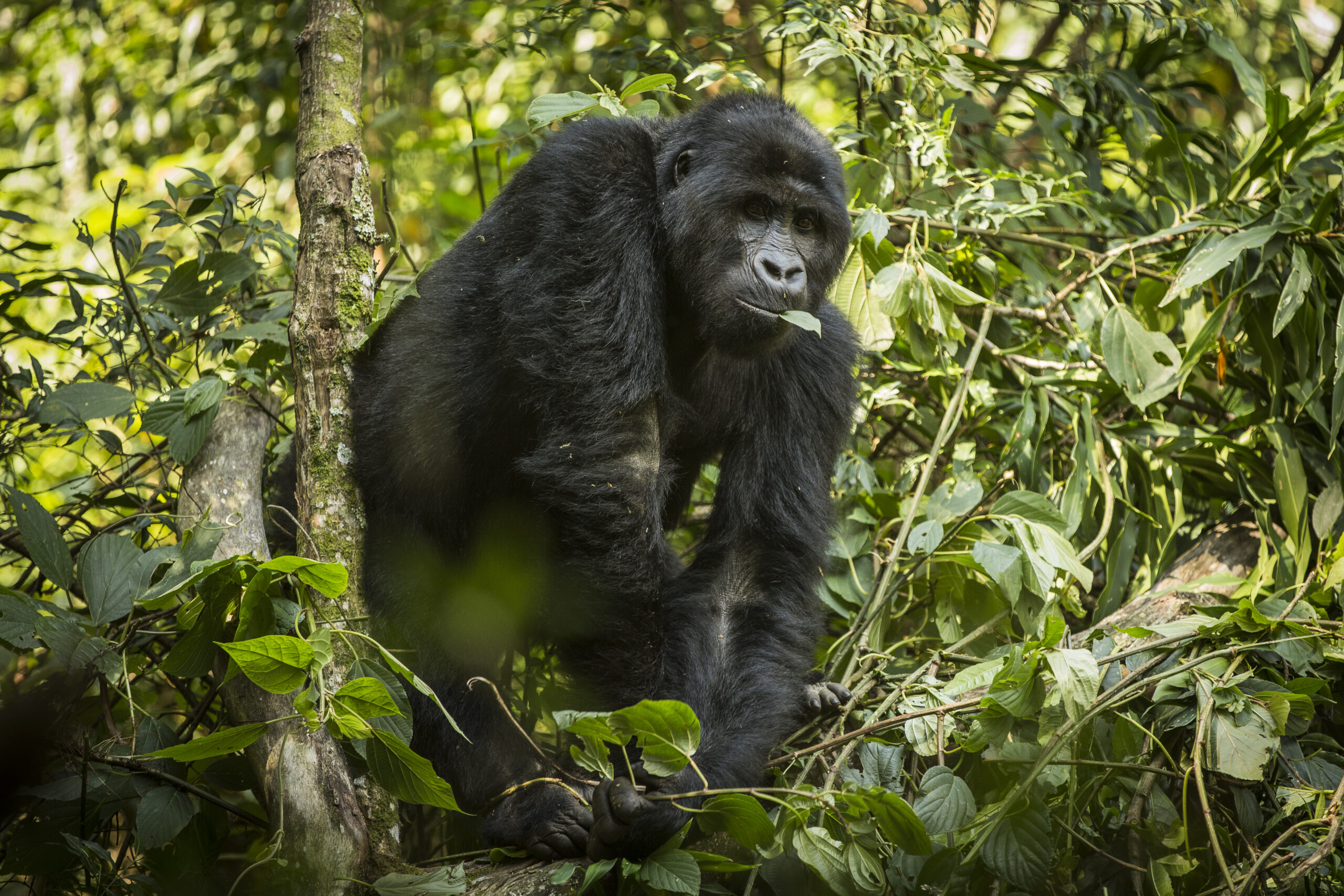
The endangered eastern lowland gorilla, also known as the Grauer’s gorilla, is a sub-species of the eastern gorilla that resides in the lowland tropical rainforests of eastern Congo.
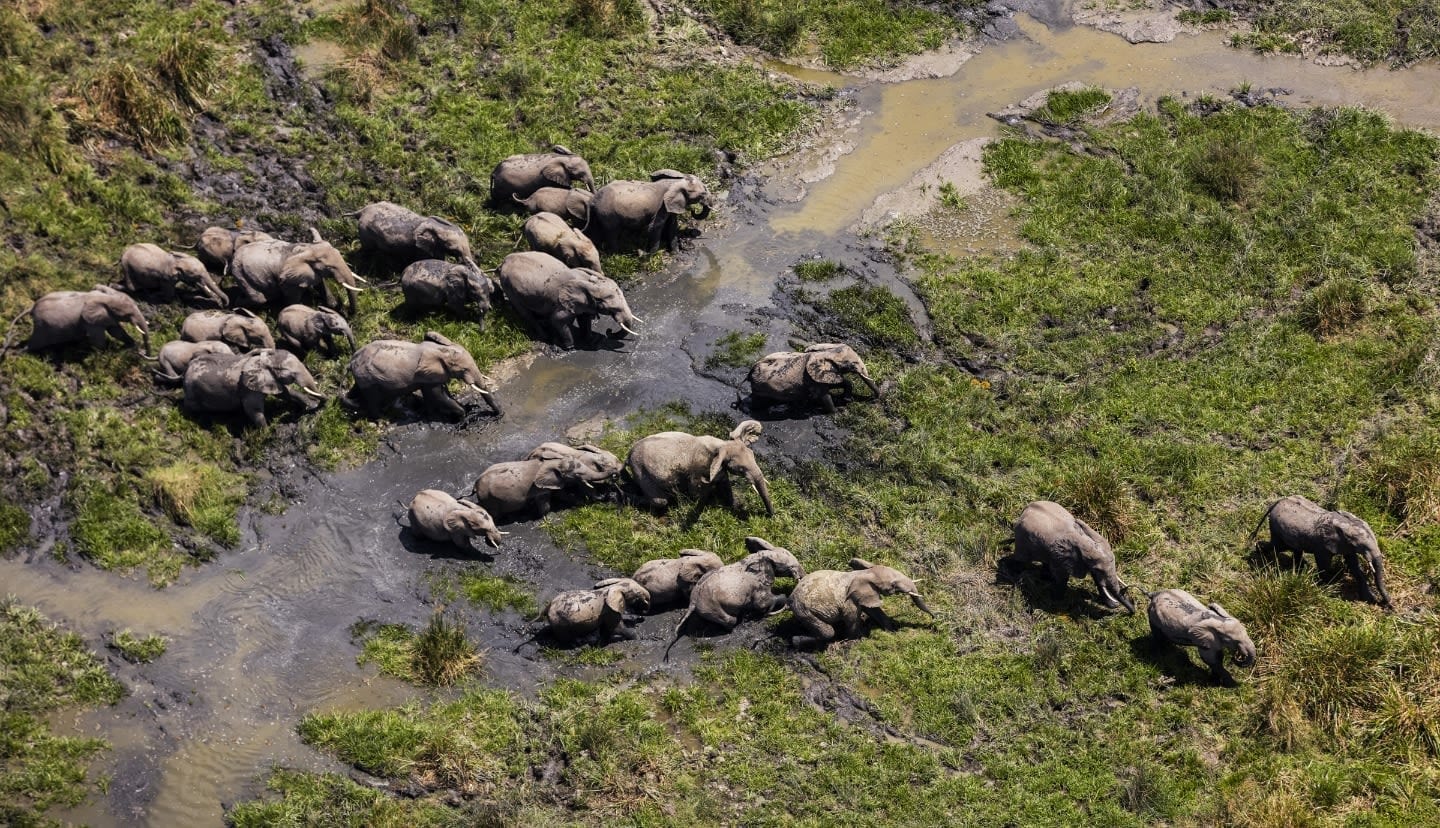
Both savanna elephants and forest elephants reside in Virunga National Park, making it one of the few places in the world where both species co-exist.
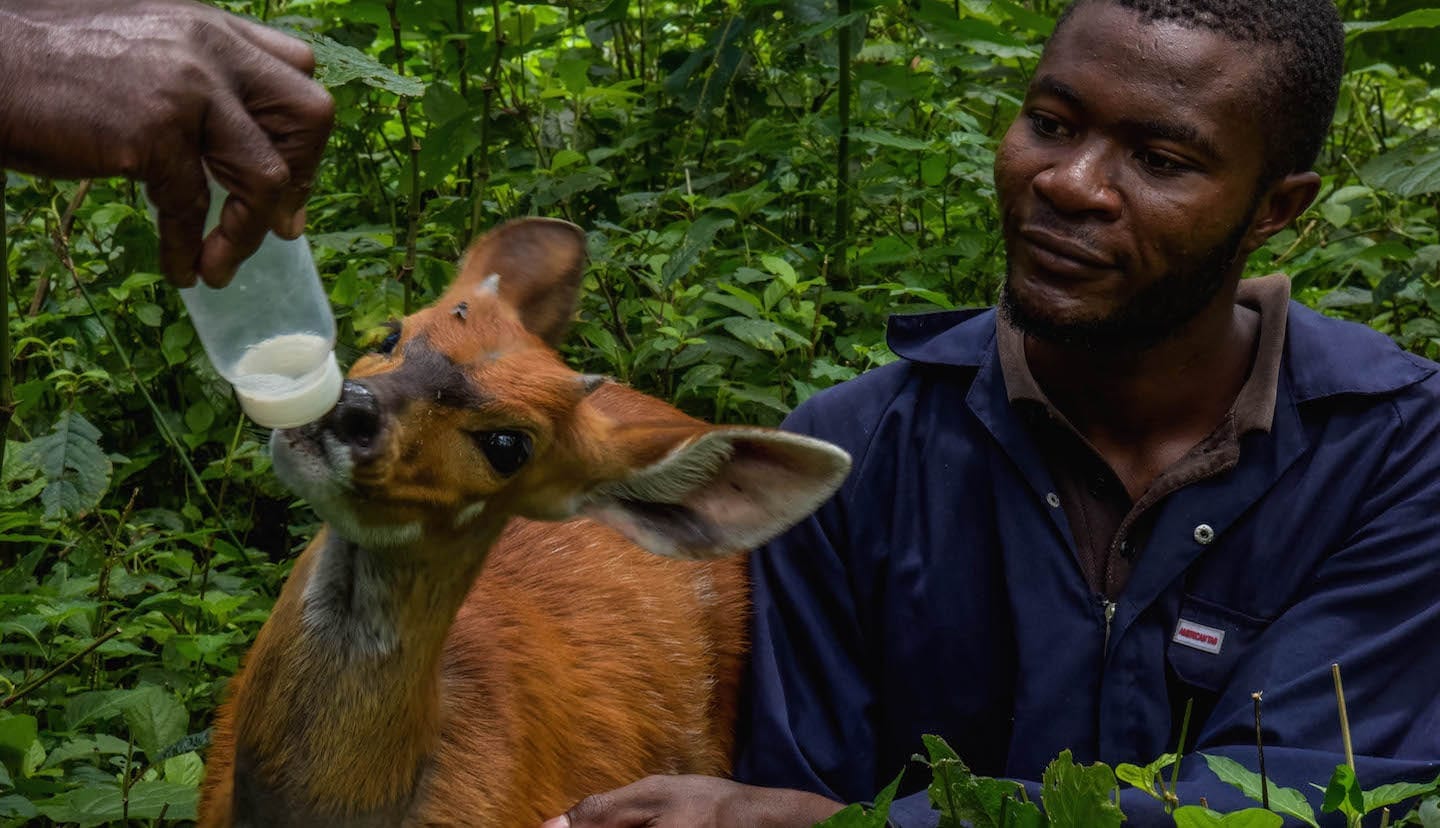
Hippos, which can weigh up to 4,400 pounds (almost 2,000 kilograms), make their home in many different rivers, lakes, and pools throughout Virunga.
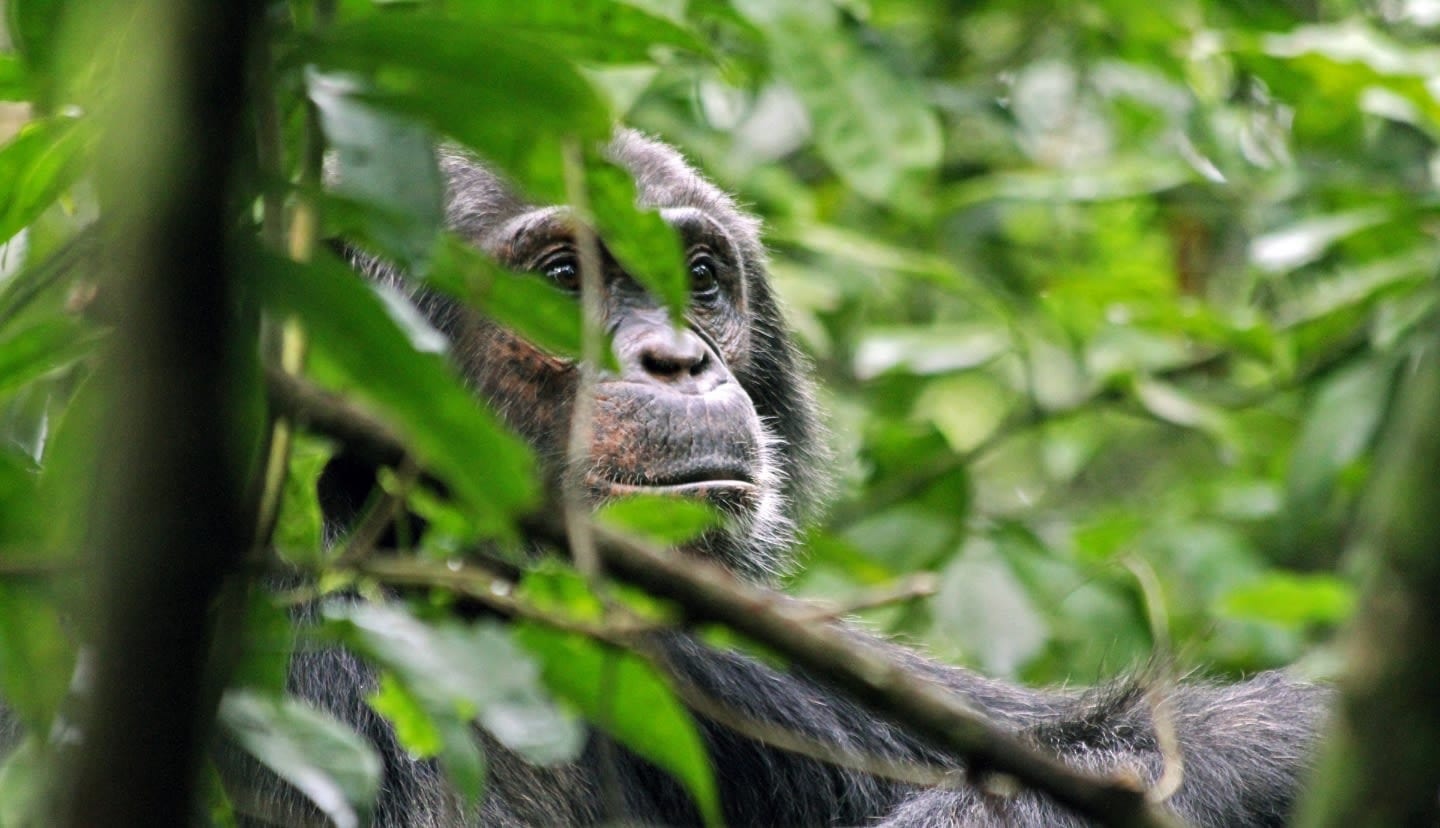
Chimpanzees are an endangered species and one of the four species of great apes. Like humans, chimps communicate with facial expressions, gestures, and sounds.
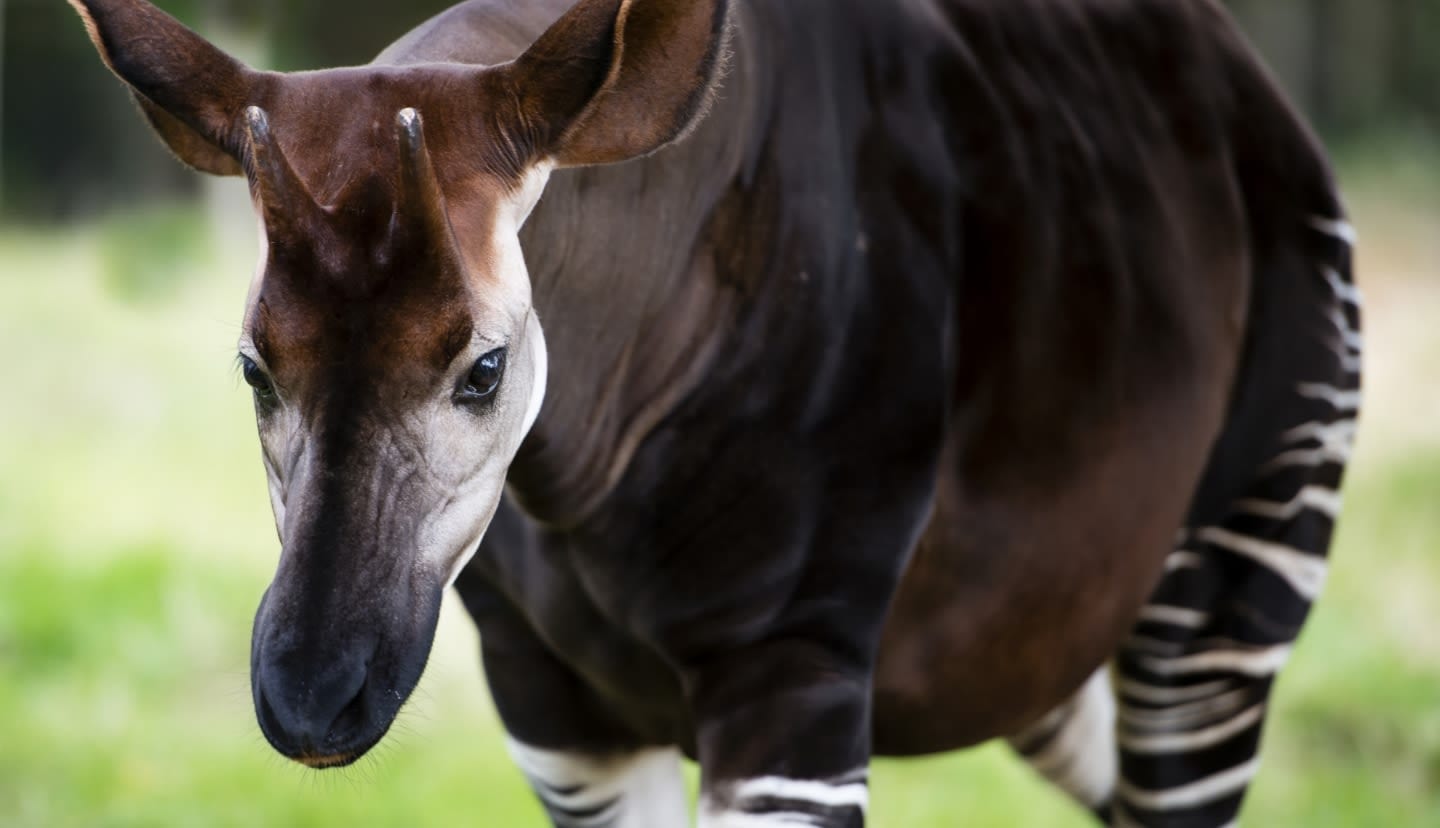
Okapis are shy and solitary animals that resemble zebras but are more closely related to the giraffe and are endemic to the DRC.
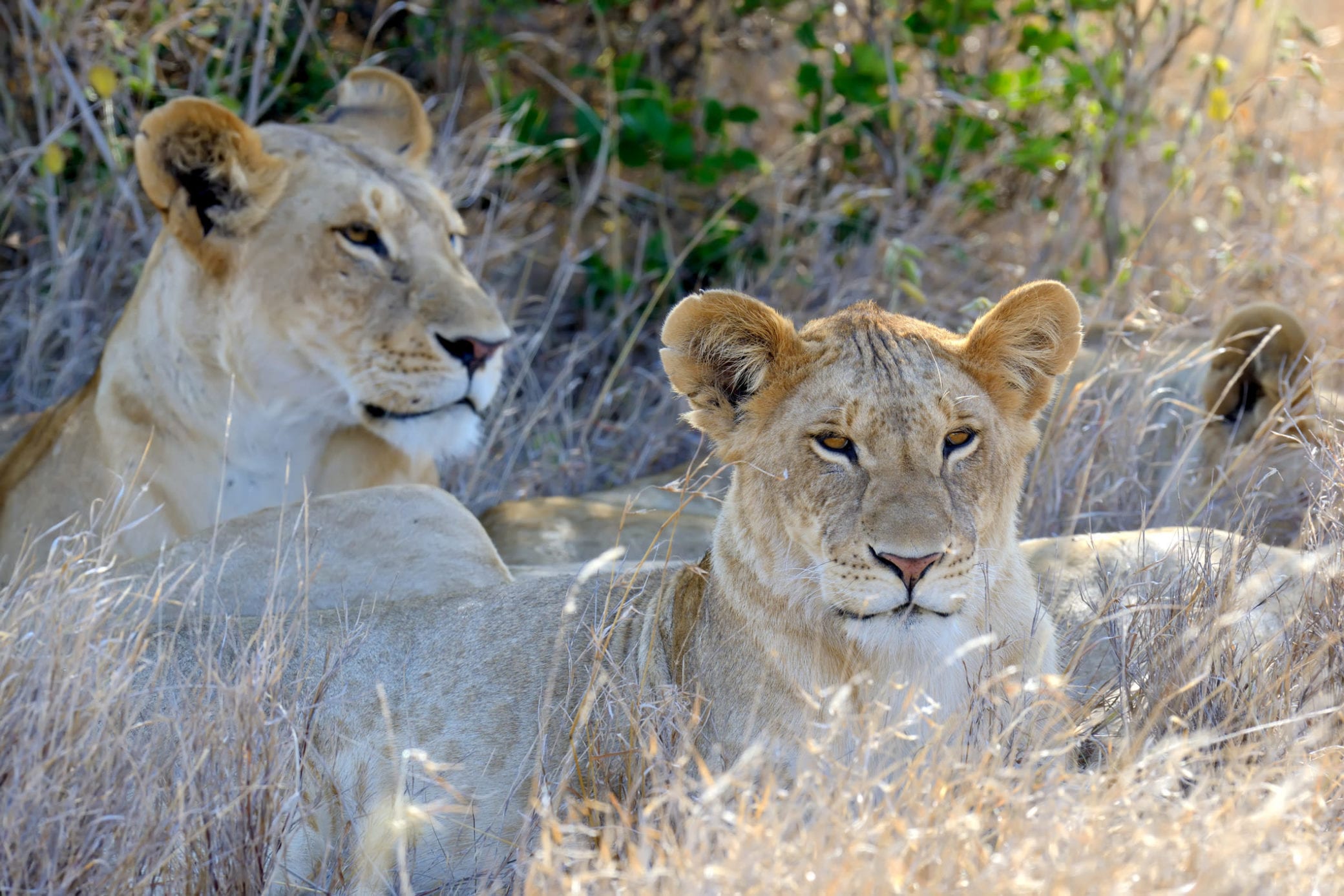
Lions are carnivores that consume a wide variety of prey, from wildebeest, impala, zebra, giraffe, buffalo and wild hogs to the occasional rhino, hippo, or elephant when food is scarce.
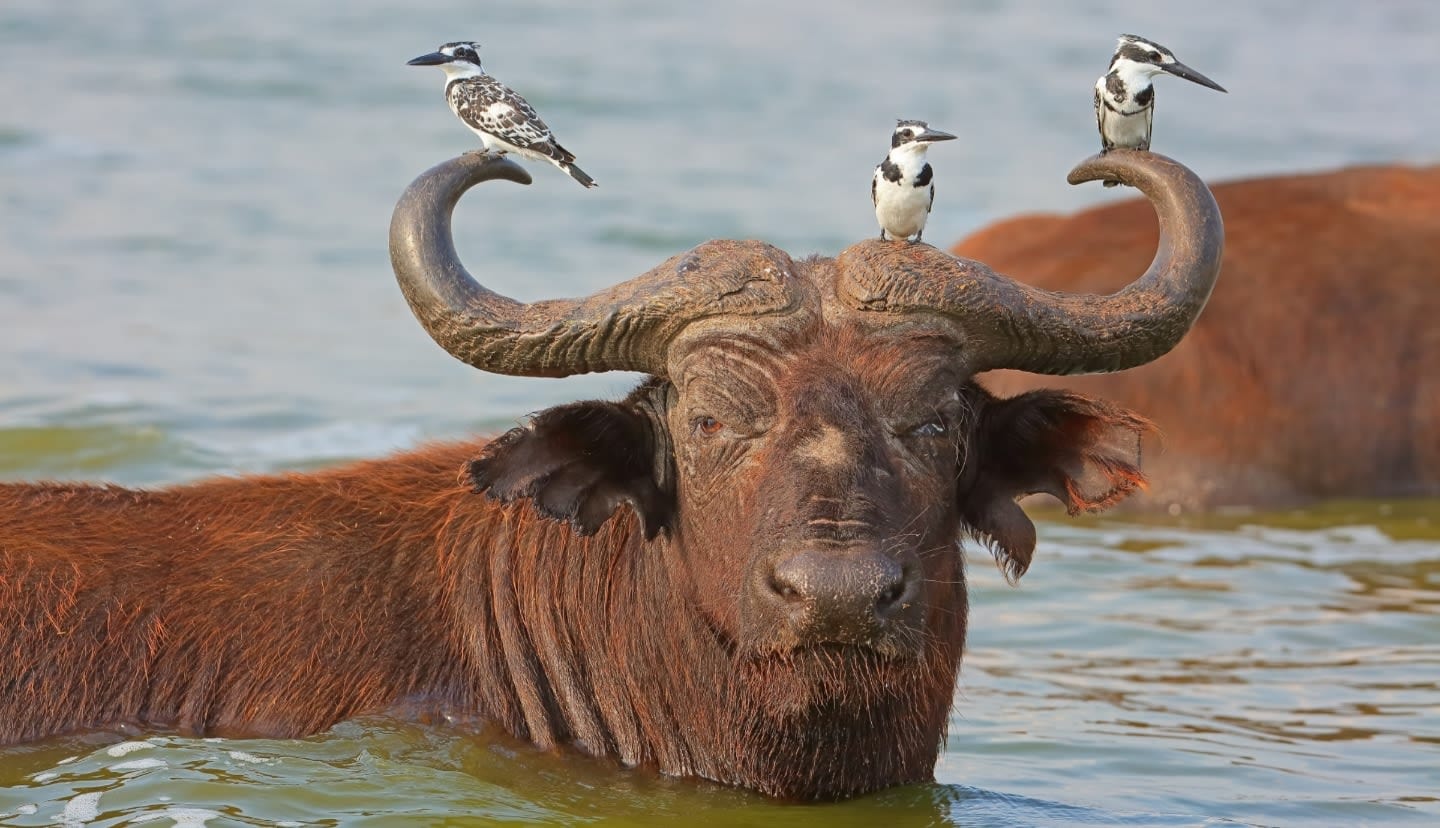
Both savanna and forest buffalo are found in the park and can be found roaming the Rwindi plains in the Park’s Central Sector.
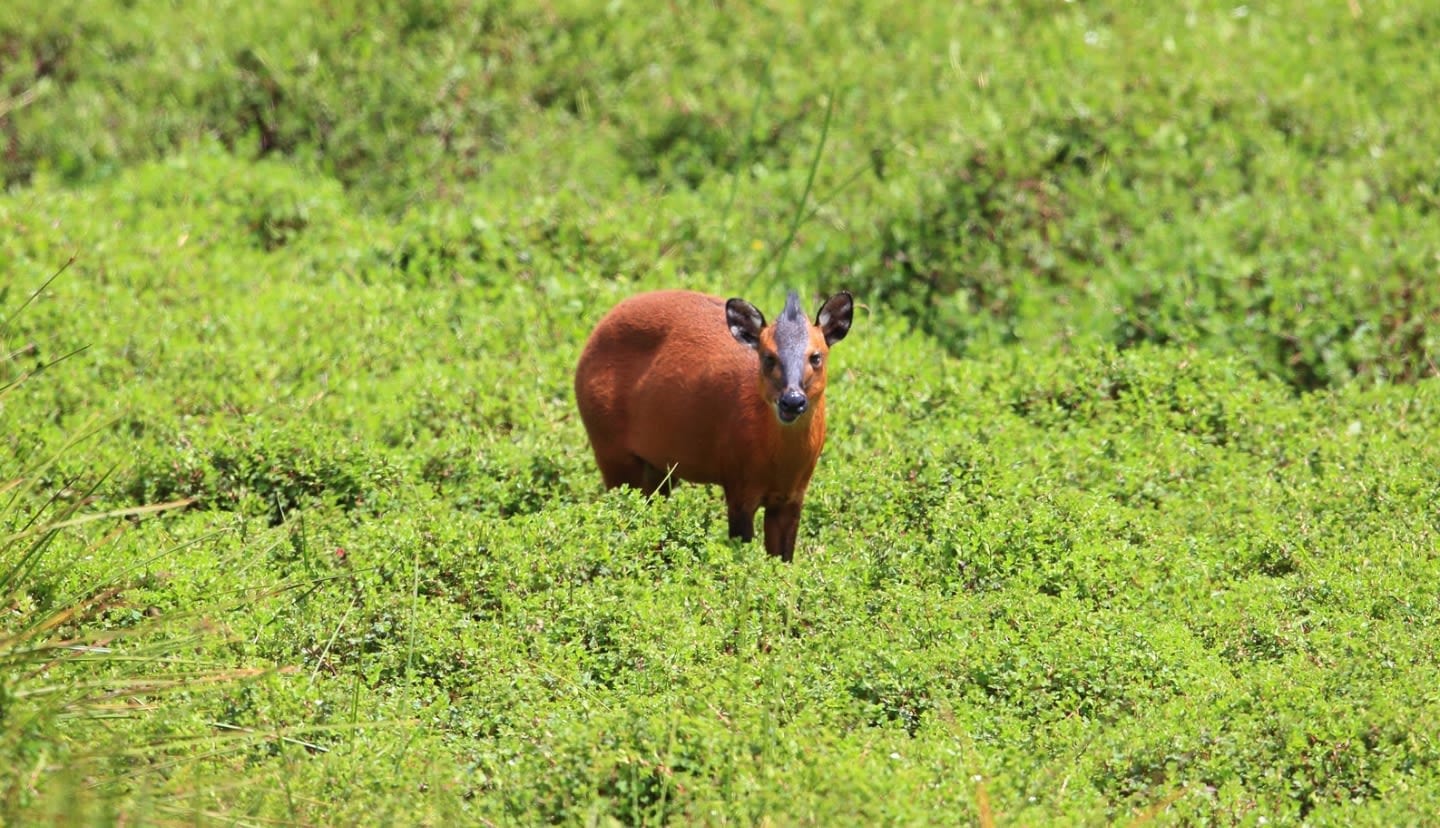
The endangered Rwenzori duiker or Rwenzori red duiker is a stocky, small antelope endemic to the alpine zones of the Rwenzori mountains.
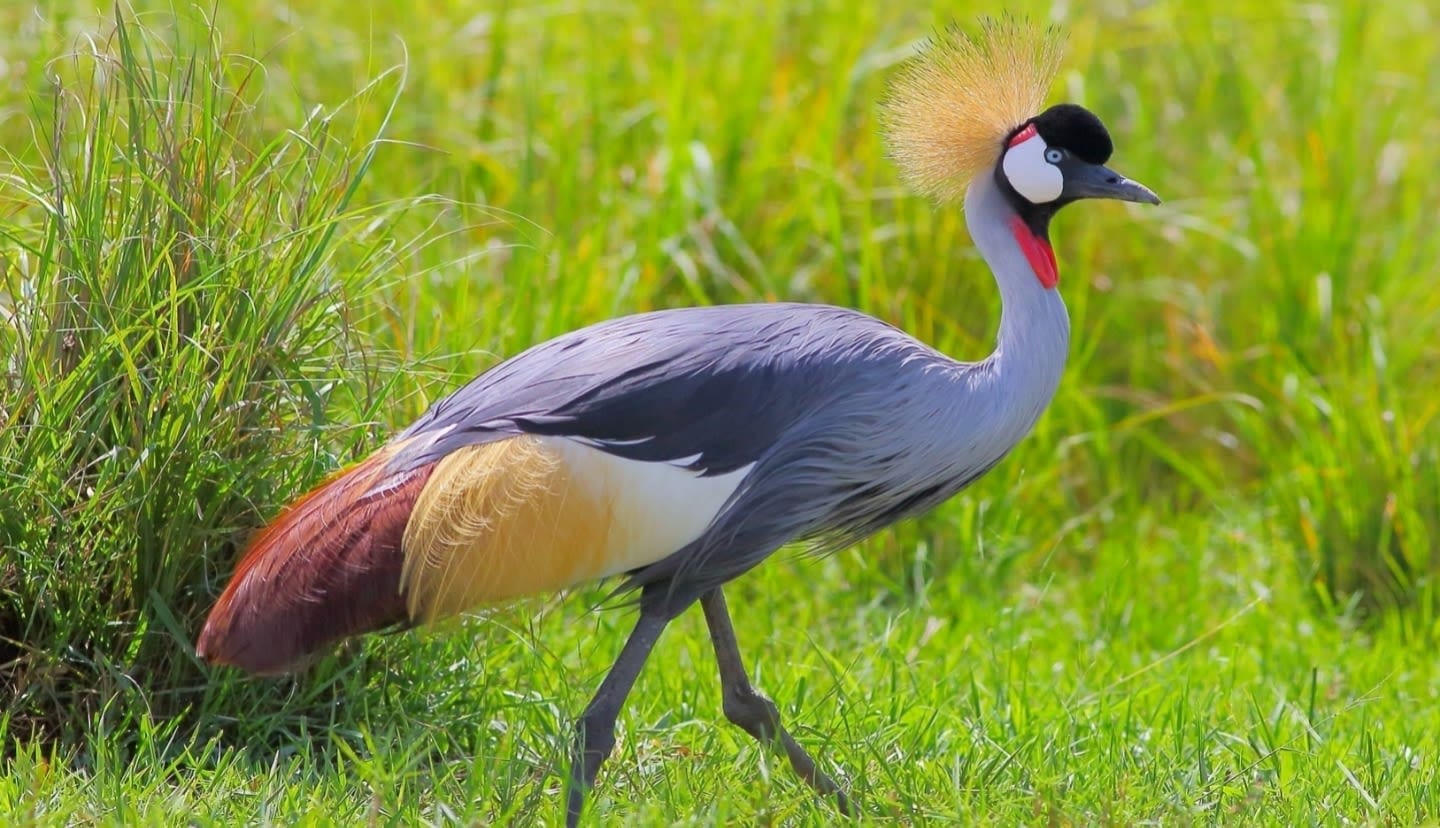
The grey crowned crane lives in wetlands, grasslands, savannas, and forests near the Ishasha and Rwindi Rivers.
Standing over 3 feet (1 meter) tall, it’s known for its
grey plumage, red throat pouch, and golden
crown. Only about 30,000 remain in the wild —
12,000 in South Africa and 18,000 in East Africa.
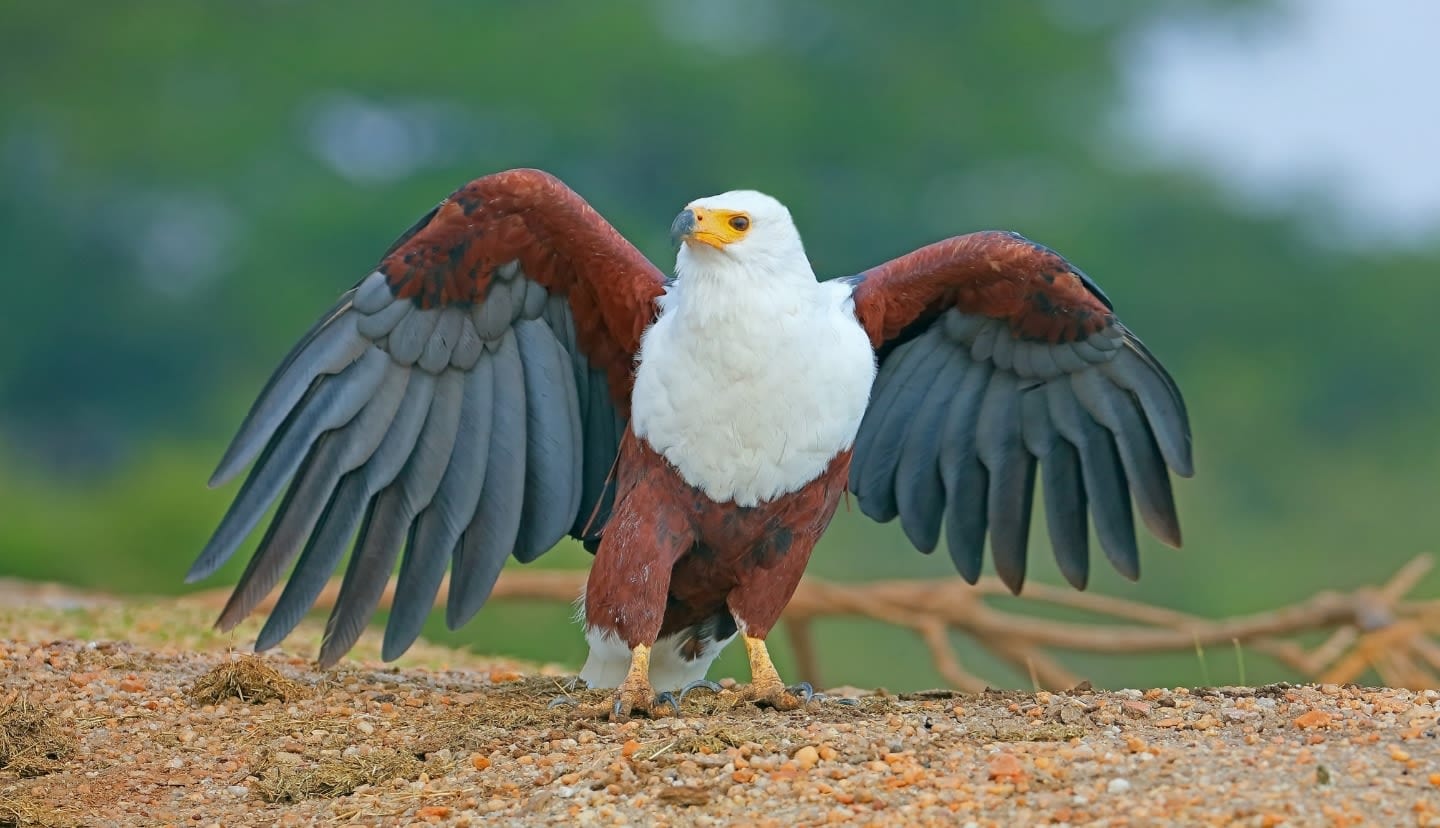
African fish eagles are powerful birds of prey found across Sub-Saharan waterways.Though they mainly eat fish, they’ll also feed on carrion, birds, monkeys, and crocodile hatchlings when needed. Females, larger than males, have up to an 8-foot (2.4 meters) wingspan and are easily recognized by their brown bodies, white heads, yellow faces, and strong black wings.
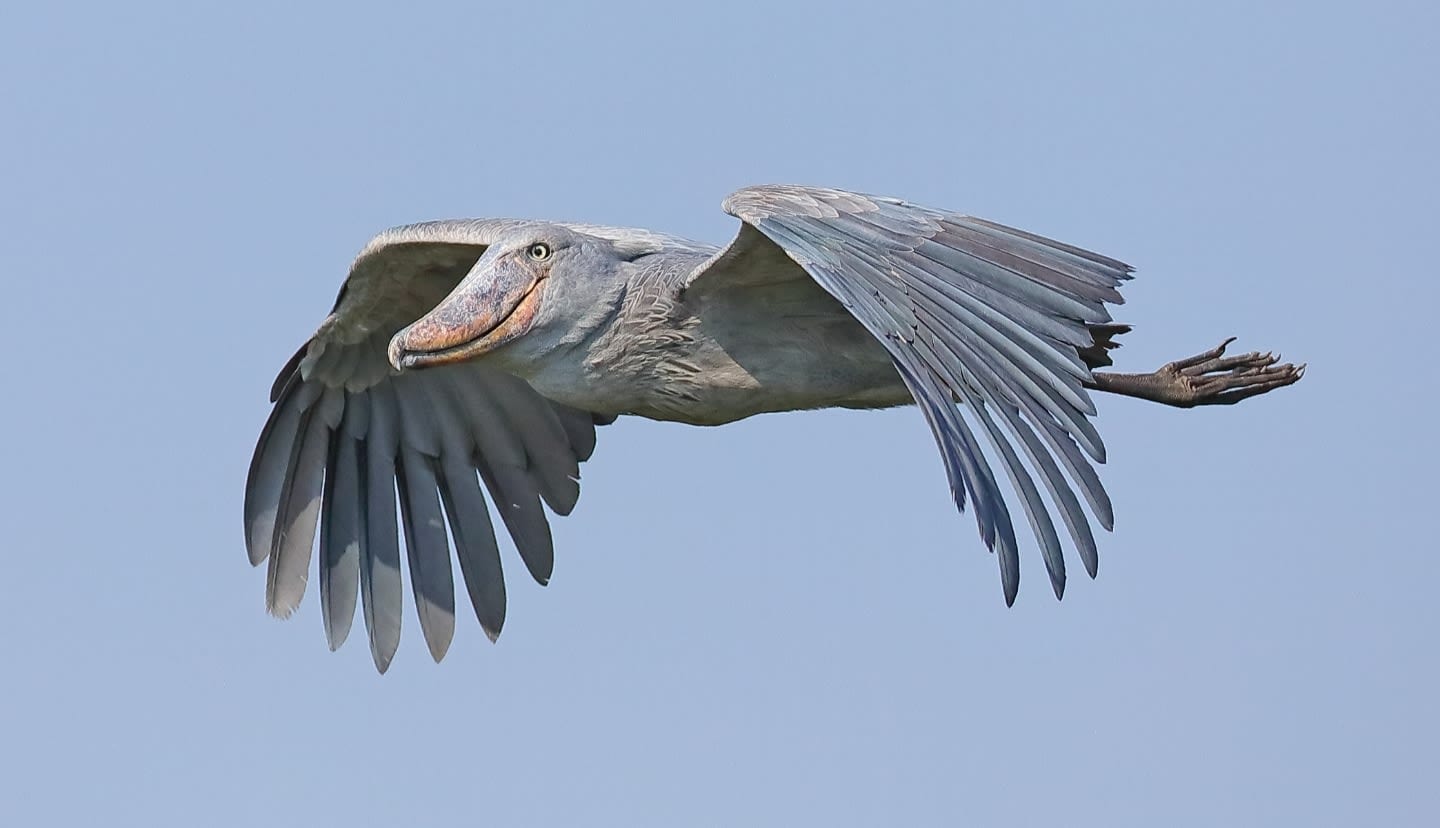
Shoebills inhabit the swamps and marshes of Virunga’s Central Sector near Lake Edward, and the Ishasha and Rwindi Rivers. These tall, stork-like birds have wingspans over 8 feet (2.4 meters) and hunt in shallow,
low-oxygen waters using their sharp beaks. Typically solitary, they only interact when breeding or threatened.
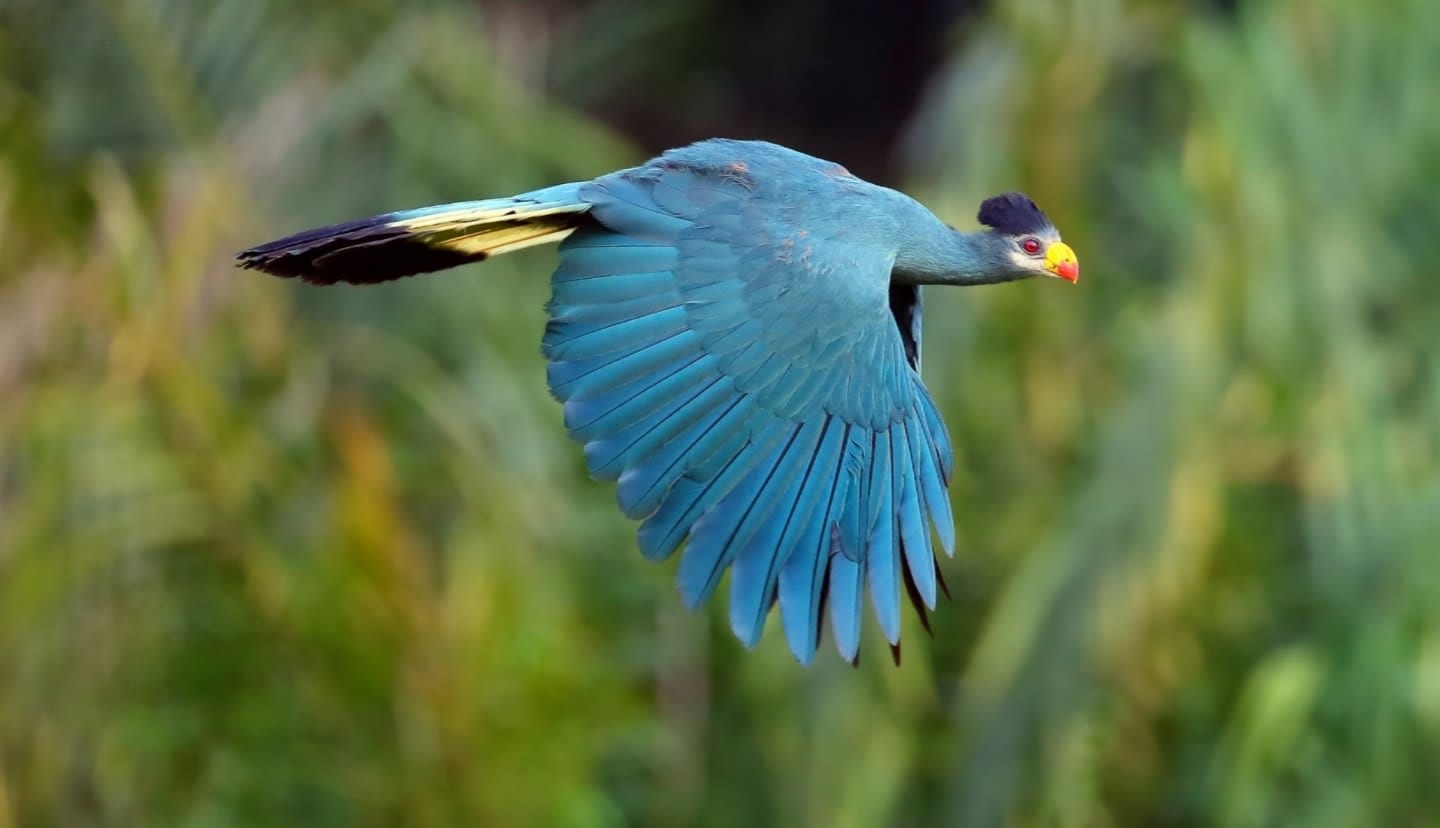
The great blue turaco is the largest member of the turaco family. They eat mostly fruit, but also feed on buds, shoots, leaves, flowers, and insects. Great blues are shy and rarely descend to the ground except for drinking and bathing.
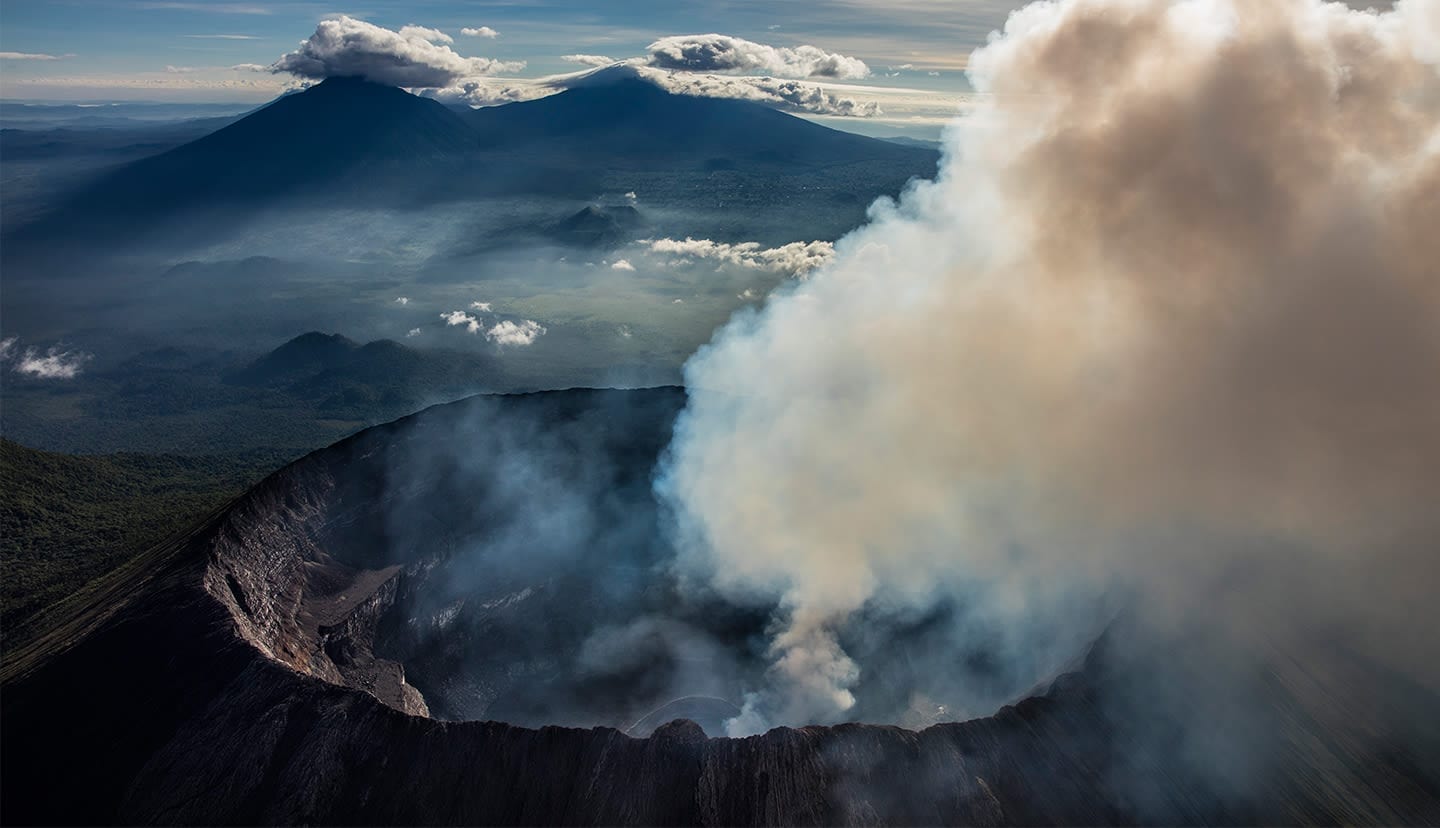
Nyiragongo is an active stratovolcano known for having the world’s largest lava lake, spanning 700 feet across and rising to 11,380 feet (3,470 meters) in height.
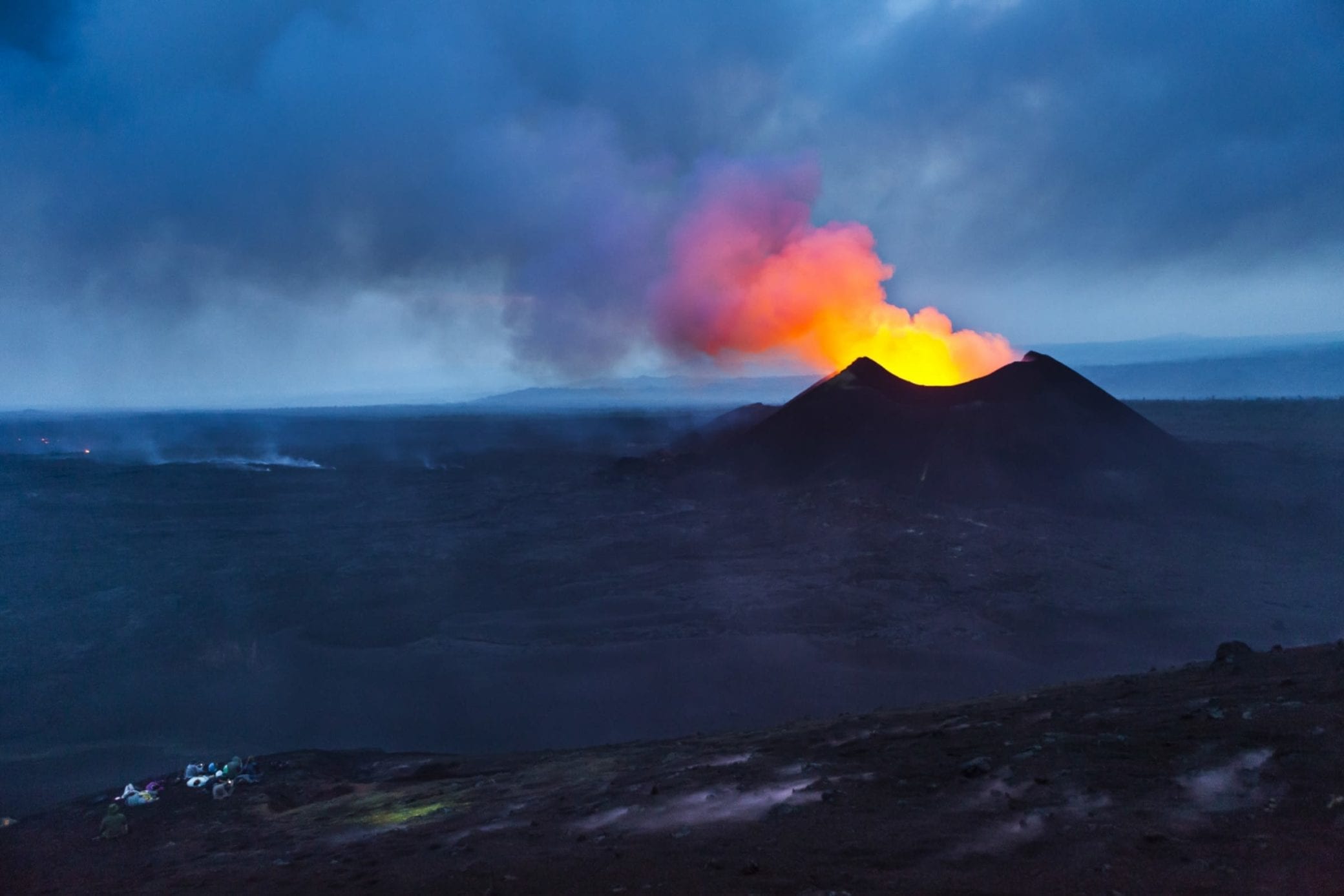
Nyamuragira volcano, situated around 15 miles
(25 kilometers) north of Lake Kivu, has been
described as one of Africa’s most active volcanoes.
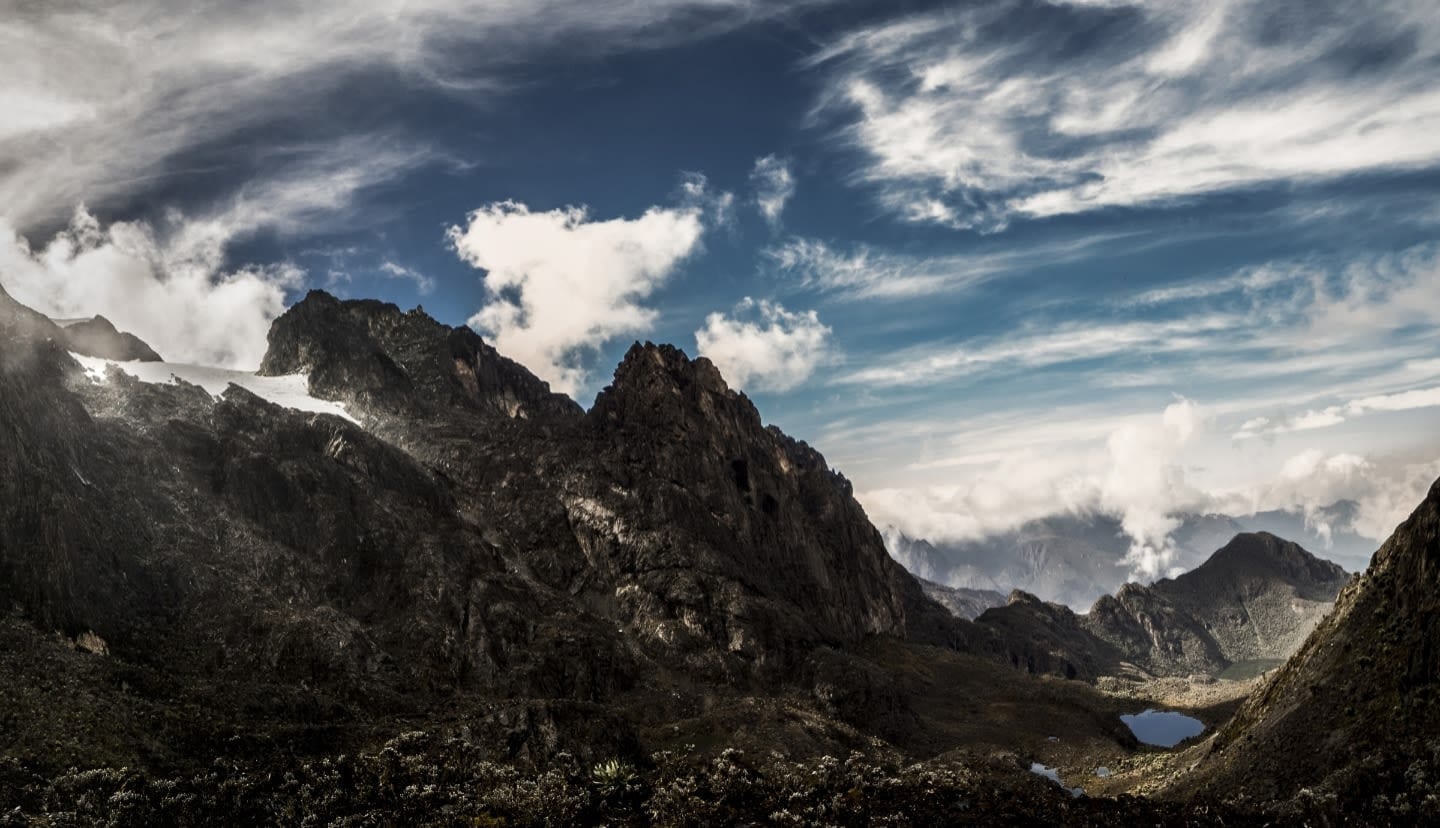
Located on the border between Uganda and the Democratic Republic of Congo, the Rwenzoris, or “Mountains of the Moon”, Africa’s third-highest range—rise to 16,761 feet (5,109 meters).
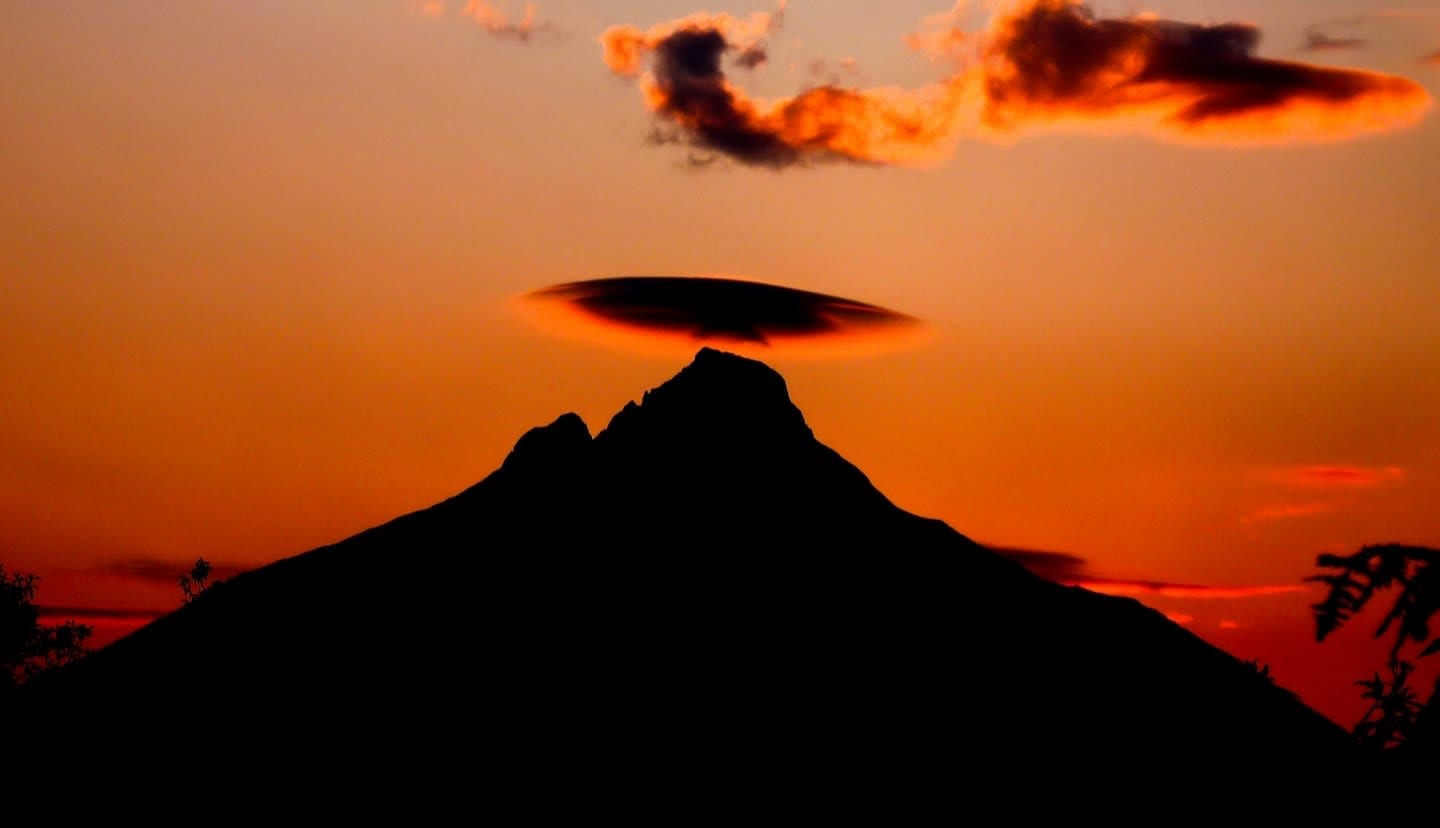
Mount Mikeno is an extinct volcano located in the Virunga Mountains.At 14,557 feet (4,437 meters), Mount Mikeno is the second-highest peak in the Virunga Mountains and the 13th-highest mountain in Africa.
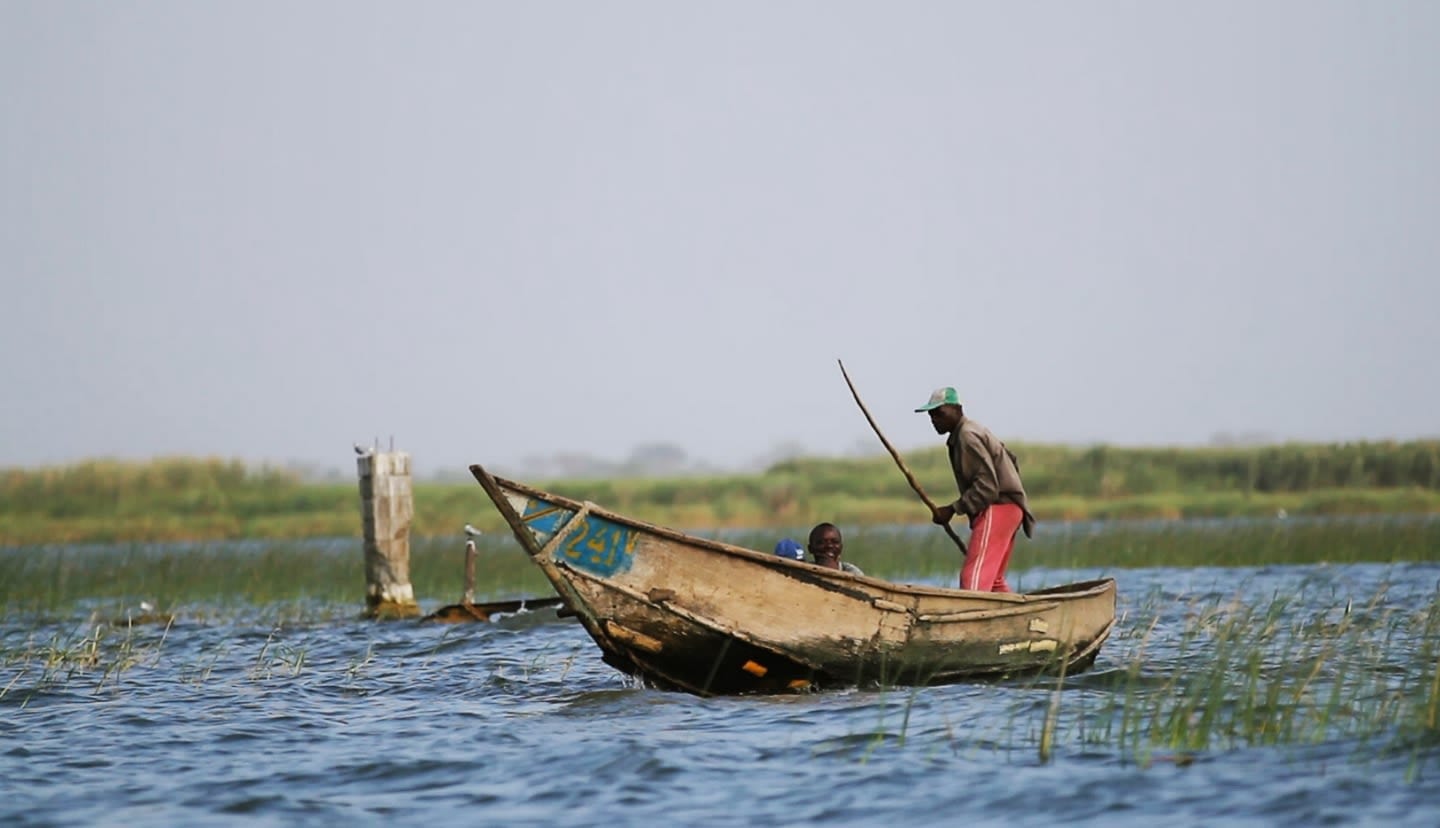
Lake Edward, one of Africa’s most fertile lakes, teems with birds, fish, and mammals. Its shores are often lined with hippos, elephants, crocodiles, and chimpanzees.
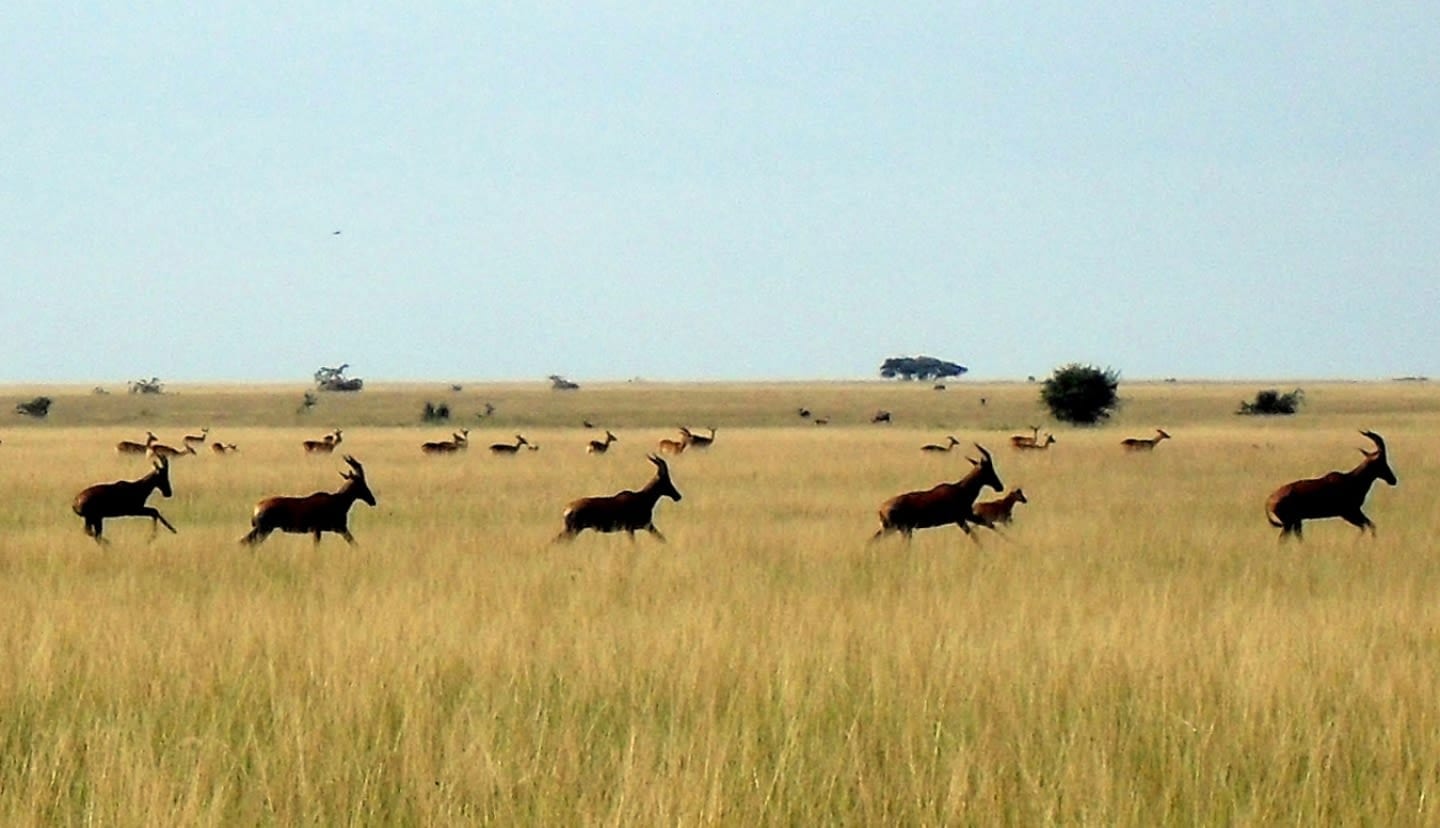
Surrounded by mountains and home to Lake Edward, this vast grassland and savanna hosts the Park’s highest numbers of elephants, buffalos, and warthogs.
The Park’s 3,000 square miles (7,800 square kilometers) is comprised of four sectors – northern, central, southern and lake sector – each with an unrivaled diversity of landscapes and ecosystems.
Situated in the center of the Albertine Rift, between Uganda and Rwanda, Virunga’s 7,800 square kilometers (3,000 square miles) stretches from the Virunga Massif in the south, to the Rwenzori Mountains in the north.
The central sector is based around Lake Edward, the Ishasha river valley and the Rwindi plains.
Virunga’s southern sector is best known for its montane tropical forests, active volcanoes, and the mountain gorillas that live on the flanks of the dormant Mikeno volcano.
Virunga National Park was founded in 1925 as Albert National Park. It was the first national park to be established on the continent of Africa, primarily to protect the mountain gorillas living in the forests of the Virunga Massif.
When it was first established, Virunga National Park was limited to three volcanoes in the south, but was later expanded northward to include the Rwindi plains, Lake Edward and the Rwenzori “Mountains of the Moon”.
In 1969, following the country’s independence from Belgium in 1960, the Park was renamed Virunga National Park. Ten years later, in 1979, Virunga was designated as a UNESCO World Heritage Site.
Over the past 20 years, Virunga has experienced numerous periods of conflict, often originating within or around the Park. Eastern Congo is one of the most economically disadvantaged places on earth, and competition for the Park’s rich natural resources has always been fierce.
In 2008, the Congolese National Parks Authority, (Institut Congolais pour la Conservation de la Nature, ICCN), and the Virunga Foundation (then known as the Africa Conservation Foundation), entered into a partnership to manage the Park.
This partnership initiated a comprehensive reform program and planted the seed for what would become the Virunga Alliance – an innovative development programme to address the root causes of poverty and conflict, to eradicate illegal and destructive resource extraction in the region.
Learn more about the history of Virunga National Park by exploring the timeline below.
The ICCN (Institut Congolais pour la Conservation de la Nature) is the branch of the Congolese government tasked with the protection and conservation of protected areas in the DRC. Virunga National Park is one of the five UNESCO protected areas that fall under the jurisdiction of the ICCN.
The Virunga Foundation is a UK-based charity founded in 2005, created to support the protection of the flora and fauna of the Park, and to generate benefits for the local communities that live around the national park. The Foundation holds the management contract for the Park, which requires it to restore and manage the national park with ICCN.
La Fondation Virunga Belgique was incorporated in 2015 to support Virunga National Park through fundraising and public outreach.
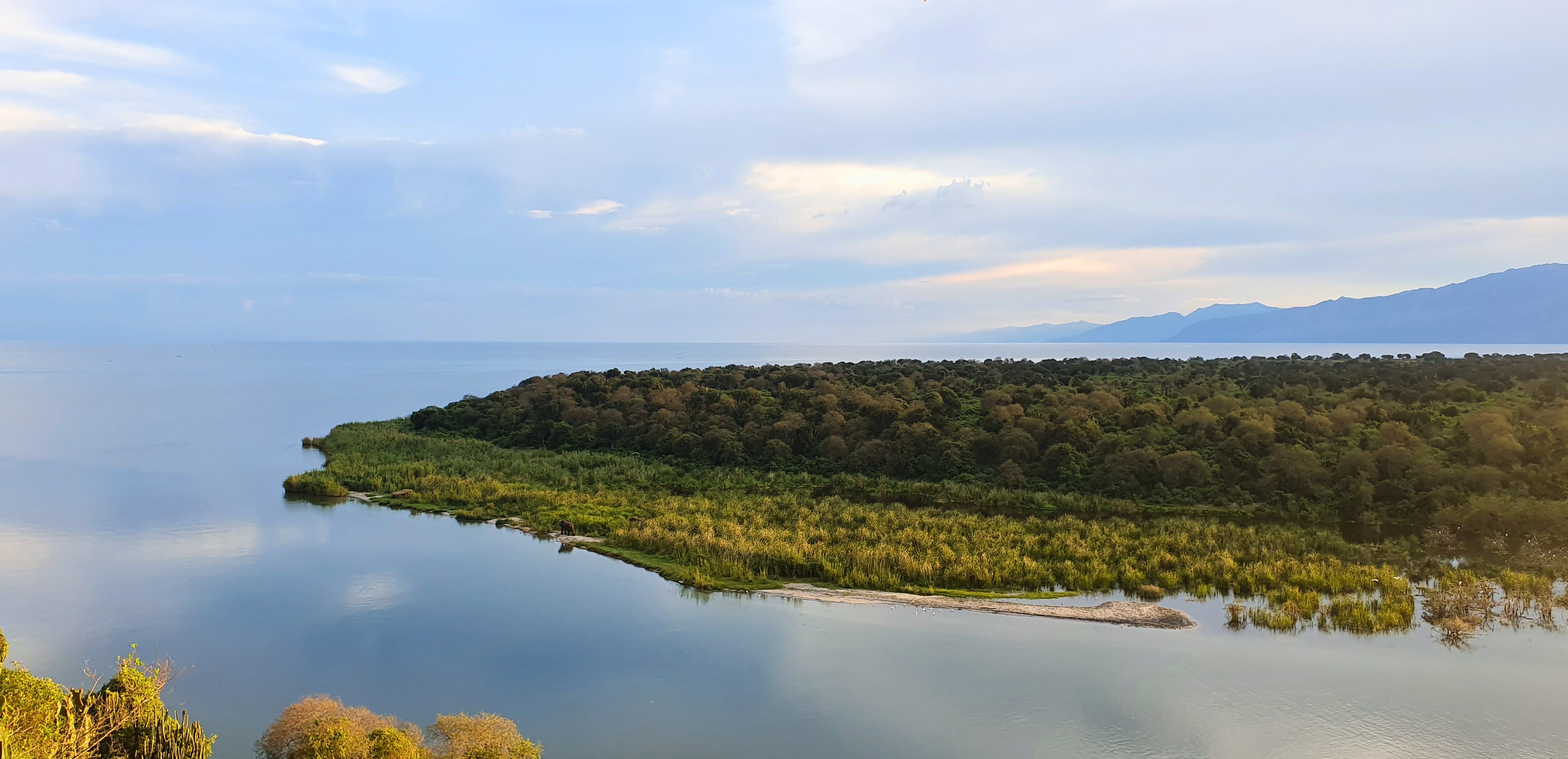
The world’s entire population of endangered mountain gorillas live only in the Virunga Massif and Bwindi National Park, which spans parts of Democratic Republic of the Congo, Uganda, and Rwanda. Virunga National Park is home to around a third of those gorillas, which reside in the dense forests on the lush slopes of the Virunga volcanoes.
The world population of mountain gorillas is currently estimated to be at around 1000 individuals. In Virunga’s southern sector around Bukima, there are currently ten habituated gorilla families and four solitary males which are also habituated, meaning that they are unafraid of human presence.
The habituation process is done by researchers and rangers who visit the gorillas daily for between two and three years until the gorillas are comfortable having people near them. Habituation is a critical component of gorilla conservation, as it allows for detailed research to be undertaken on the species. This helps to increase understanding of mountain gorilla behaviour, as well as allowing veterinary teams to intervene if gorillas are injured or showing signs of ill health.
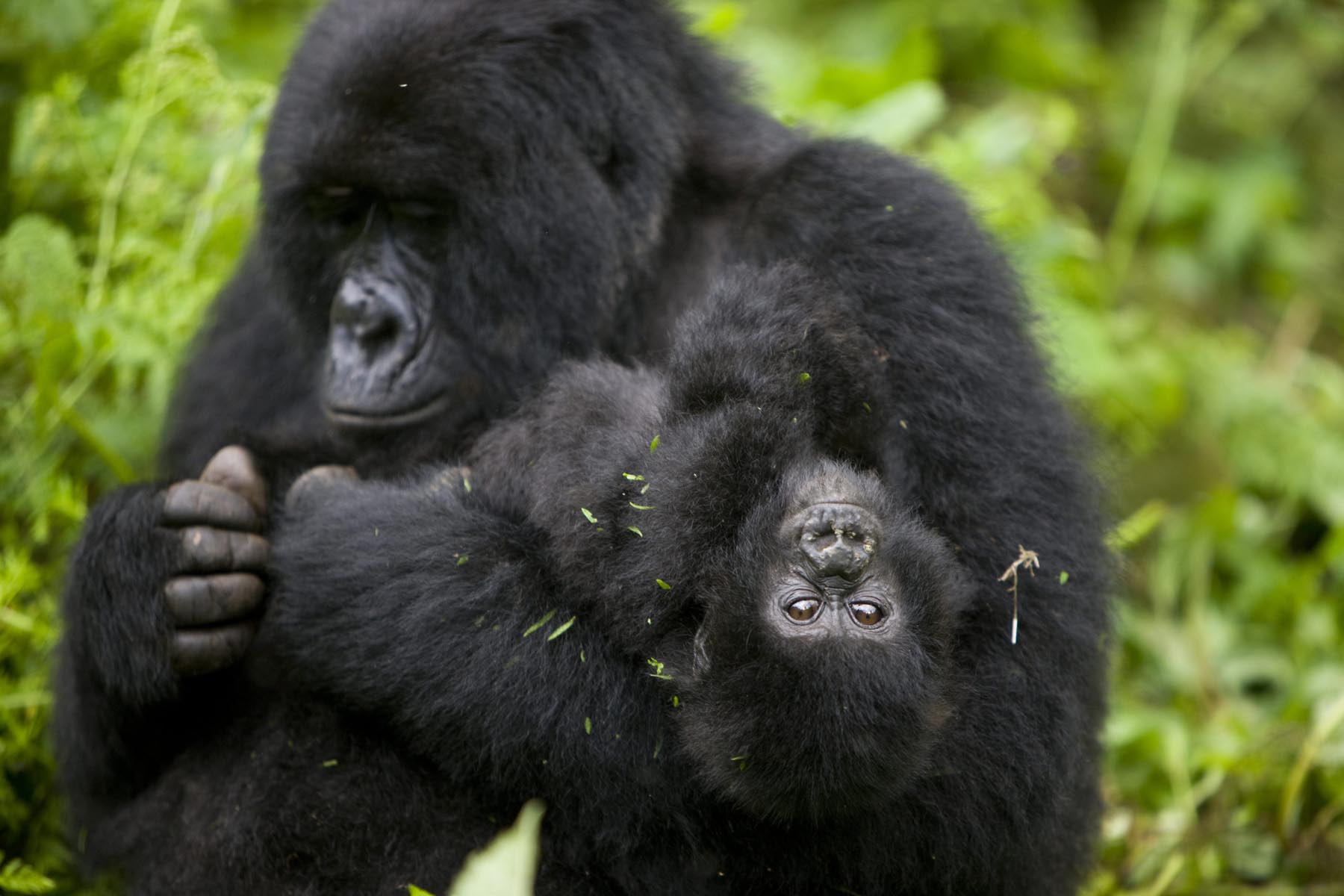
Your support ensures that communities and nature can thrive together for the next 100 years.
Celebrate 100 years of Virunga with our commemorative anniversary book – every copy helps protect Africa’s oldest national park.
Shop Now
A limited-edition chocolate gorilla handmade from local cocoa — supporting Rangers and the gorillas they protect.
Shop Now
Purpose-driven gifts and merchandise supporting widows of fallen Rangers and the conservation of Virunga National Park.
Shop Now